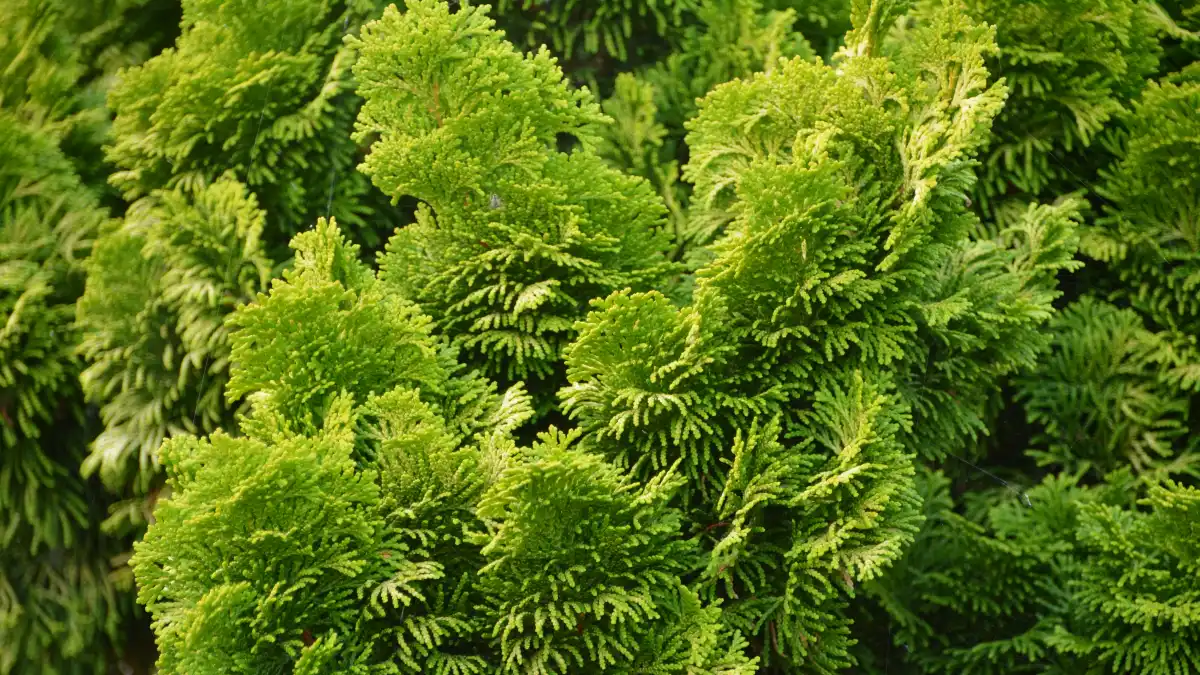If you want a living fence that stays green in January as well as July, you need trees that don’t lose leaves. A lot of “privacy” plants drop foliage just when you want cover, and many popular evergreens grow far taller (and wider) than expected—creating shade, neighbour disputes, and big pruning bills.
In England, even a well-meant hedge can fall foul of high-hedge rules once an evergreen screen tops 2 m and forms a barrier to light. This article cuts through the noise and shows you 12 evergreen privacy trees that truly provide year-round screening.
For each, you’ll get exact mature size, growth rate, realistic spacing for quick cover vs. airflow, climate fit, and the maintenance that keeps them dense without constant shearing.
You’ll also see when to choose slower, denser options (like yew) over super-fast growers, plus simple legal and neighbour-friendly tips to avoid problems before you plant. If you want the best trees for privacy that are low-drama and long-lived, start here—with data, not guesswork.
How to Choose the Right Evergreen for Privacy (before you plant)
Match mature height & spread to your space. Many favourites will exceed 10–15 m if you let them: Leyland cypress and Holm oak (Quercus ilex) both reach “higher than 12 m.” Planting a giant where a 3–5 m hedge belongs is how future removals (and neighbour issues) start. Check ultimate height and width, not just the pot label.
Balance growth rate with maintenance. Fast growers make quick screens but need more trimming to stay tidy and safe. UK guidance lists Leylandii needing two to three trims during the growing season, while yew typically needs two; Thuja plicata is usually spring and early autumn. Pick a pace you can maintain.
Get spacing right (cover vs. health). Tight spacing closes gaps faster, but leave enough room for air movement and future girth to reduce stress and disease pressure. Extension recommendations: base spacing on mature width and consider staggered double rows for faster visual closure; for disease-prone species like Leyland, some extension services advise wider spacings (≈12–15 ft / 3.6–4.6 m) to maintain airflow and reduce stress. We give exact spacing under each tree below.
Match climate and exposure (“right plant, right place”). Use reputable, current databases to confirm hardiness zones, wind/salt tolerance, soil and sun needs before you buy—examples include NC State Extension’s Plant Toolbox and UF/IFAS “Right Plant, Right Place” guidance. This avoids over-watering, winter burn, and disease-stressed hedges.
Know the law (England). A “high hedge” complaint can apply to evergreen or semi-evergreen rows over 2 m that block light or access. Plan target height and routine trimming accordingly (and discuss it with neighbours) to prevent formal action later.
The 12 trees below all keep foliage year-round (evergreen). For each, you’ll see mature height/width, growth rate, spacing, conditions, pros/cons, and a “best for” quick take.
1. Thuja ‘Green Giant’
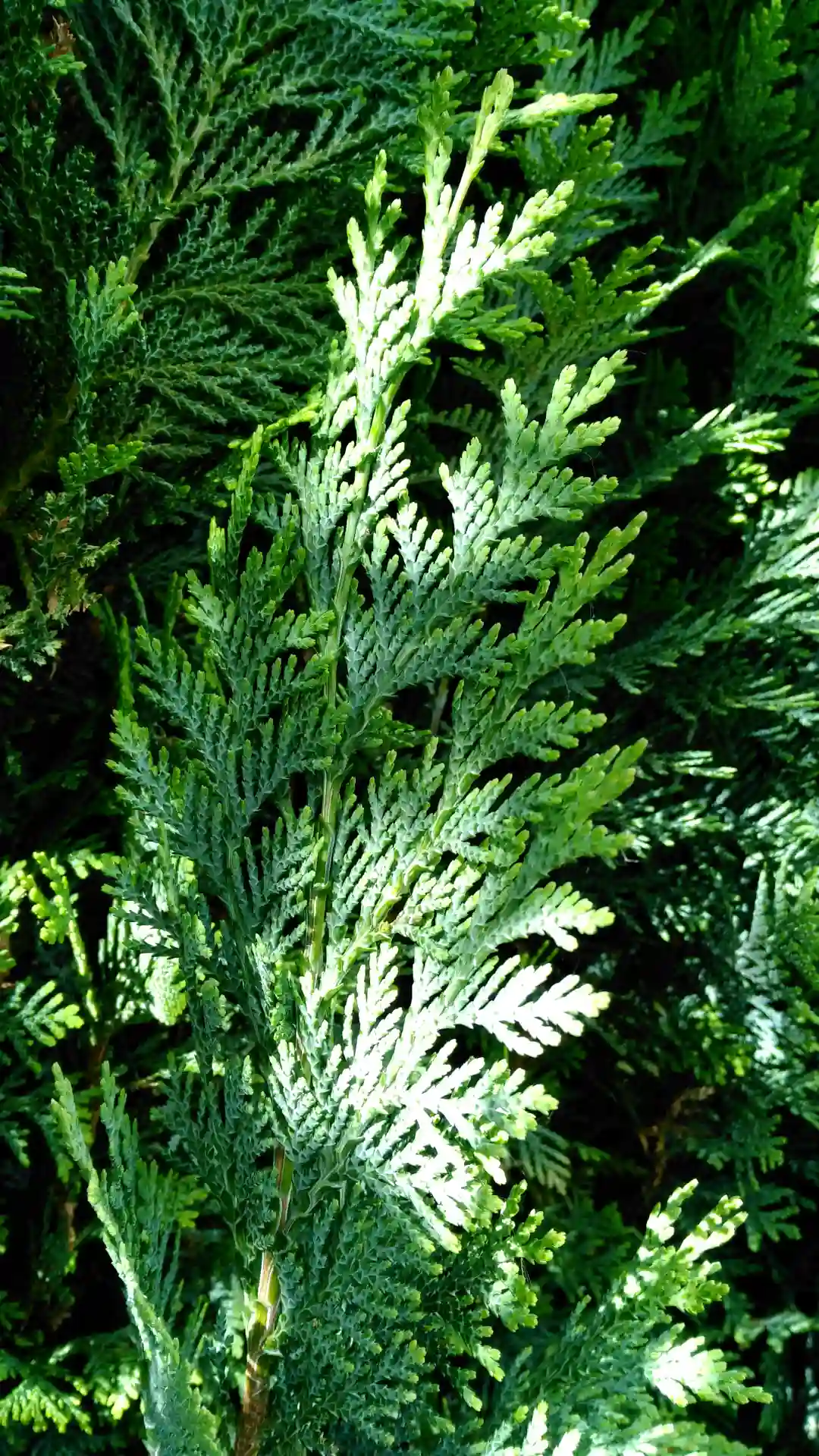
Make ‘Green Giant’ Thrive (Not Just Survive)
Practical add-ons: expert notes, airflow strategy, early-years care, and risk watch-outs for a durable evergreen screen.
Observed by JC Raulston Arboretum (NC State) under good culture.
Documented by NC State Extension Plant Toolbox.
“Fast, adaptable, and dependable in landscapes when sited in well-drained soils.”
Choose Your Spacing Strategy
| Strategy | When to Use | Trade-offs |
|---|---|---|
| Dense Hedge fast closure | When you need privacy quickly and can commit to light, regular trimming. | Less airflow; higher disease pressure if over-crowded. Plan impeccable drainage. |
| Natural Screen low maintenance | When you want a softer look and fewer trims per year. | Slower initial closure; requires patience in years 1–2. |
| Staggered Double Row maximum blackout | Windy sites or visual “no-through” barriers. | Higher cost and watering needs until established; still maintain airflow between rows. |
Tip: Whatever layout you choose, keep rows clear of walls/fences so mature side-branches don’t rub or trap moisture.
Site & Establishment Checklist
Quick Risk Radar
Most common failure in heavy soils; prioritize drainage and avoid over-watering.
Scout June–August; hand-remove bags in winter. Penn State Extension highlights arborvitae as a frequent host.
Sturdy pyramidal habit; allow natural lower limbs to remain for better anchoring and screening.
1-Hour Drainage Check (Before You Buy)
- Dig a hole ~30 cm deep and wide; rough up the sides.
- Fill with water to the top. Let it drain completely once.
- Refill to the top and time the drop. Ideal: water falls 2.5–5 cm in ~15–30 min. Red flag: barely moves after 60 min.
If drainage is slow, raise the planting area, amend site hydrology, or choose a species more tolerant of wet soils.
Why it stands out. A vigorous, adaptable arborvitae that forms a dense, wind-resistant wall—often recommended as an alternative to Leyland cypress. Growth of ~2–4 ft (60–120 cm) per year has been recorded at the JC Raulston Arboretum; in landscapes it commonly reaches 40–60 ft tall and 12–18 ft wide.
Spacing that works.
• Tight hedge (fastest cover): 5–6 ft (1.5–1.8 m) on-center.
• Natural screen: 8–10 ft (2.4–3 m).
• Staggered double row (very quick blackout): rows 8–10 ft apart, trees 5–8 ft within each row. Keep 6–8 ft from fences/walls so mature branches don’t crowd structures.
Best use. “Fastest privacy tree” for large runs where height is welcome; lower disease pressure than Leyland in many regions, but still avoid wet soils (root-rot risk) and watch for bagworms.
2. Leyland Cypress
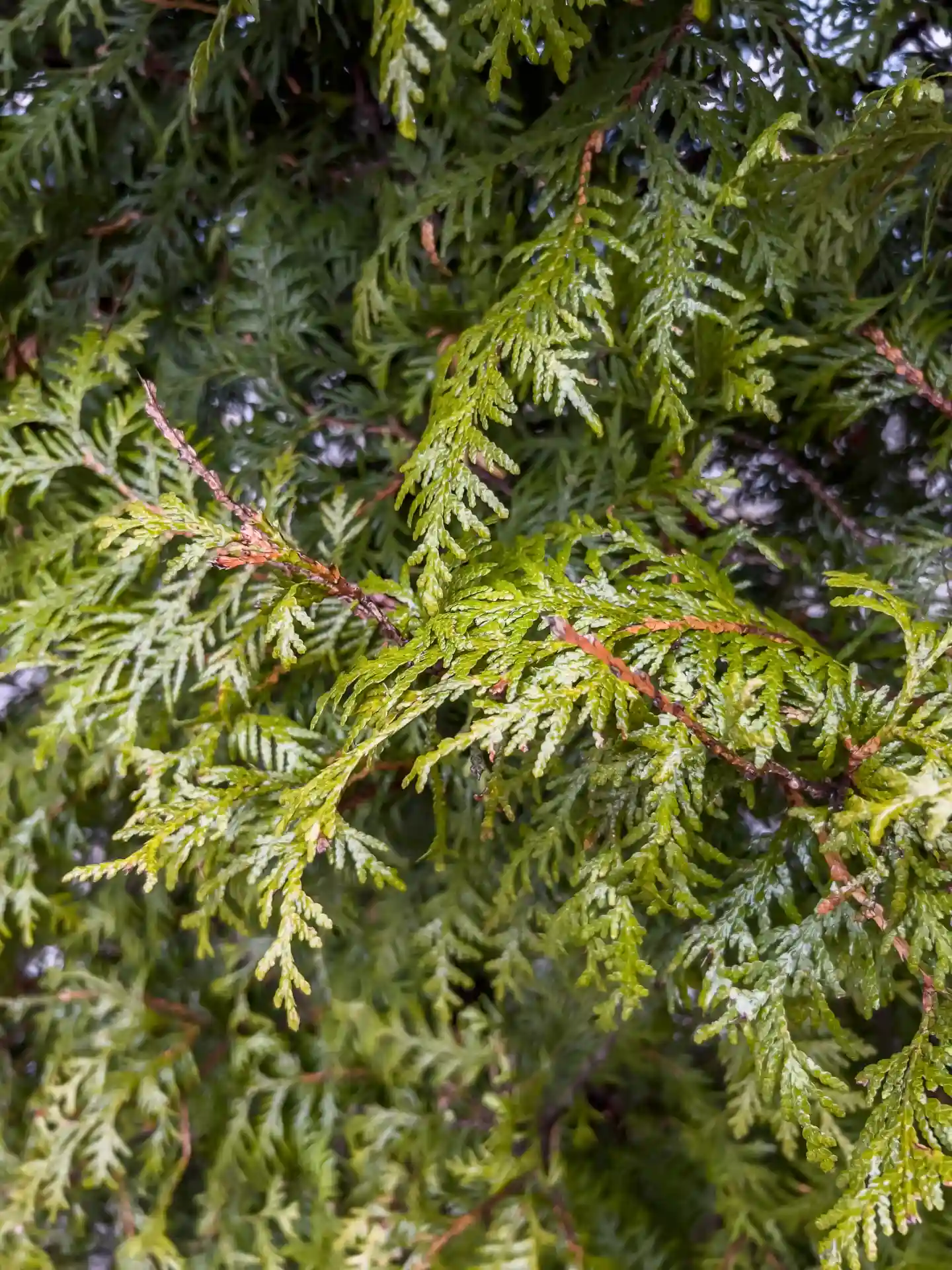
What to know. A very fast evergreen widely used for tall hedges in the UK, but it demands regular pruning (often two to three trims per growing season) to stay safe and within bounds. Left unchecked it readily exceeds 12 m.
Disease risk. Seiridium (cypress) canker is a leading cause of dieback and failure in Leylandii, especially when trees are drought-stressed or crowded. University plant-health programs flag Leyland cypress as especially susceptible and recommend considering alternatives in problem-prone areas. Wider spacing and stress reduction help but do not eliminate risk.
Legal caution (England). Evergreen hedges over 2 m that block light or access can trigger a council remedial notice under the high-hedges provisions—plan and prune to a neighbour-friendly height from day one.
3. Japanese Cedar
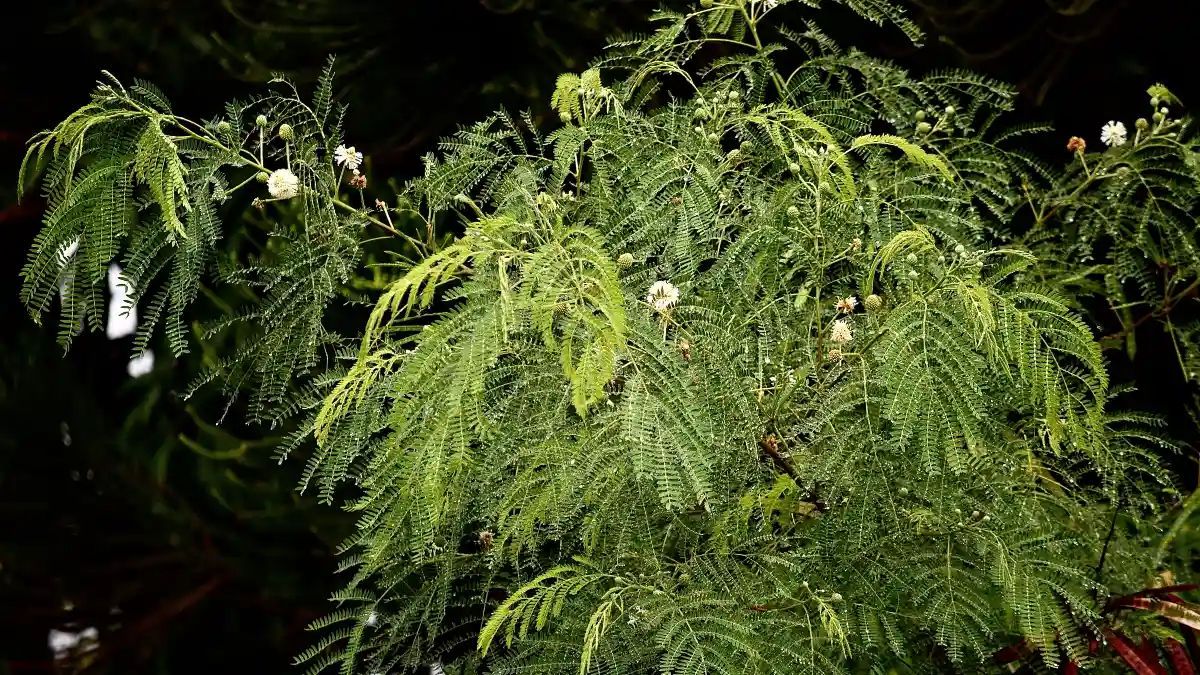
Best for: a tall, handsome Japanese cedar screen that keeps richer winter color than many conifers. ‘Yoshino’ typically finishes 30–40 ft tall and 20–30 ft wide; the species can reach 50–70 ft given time and space. Missouri Botanical Garden notes ‘Yoshino’ bronzes less in winter than many forms, keeping a greener look for privacy through the cold months.
Planting & care: University of Florida IFAS recommends full sun, shelter from harsh winds, and a moist, well-drained, acidic soil; once established, it’s reasonably drought-tolerant but grows best with consistent moisture.
Spacing that works: For a cryptomeria hedge or large screen, use a conservative 10–15 ft on-center so crowns can develop density without disease-promoting crowding. Stagger rows if you need faster closure.
4. Eastern Red Cedar
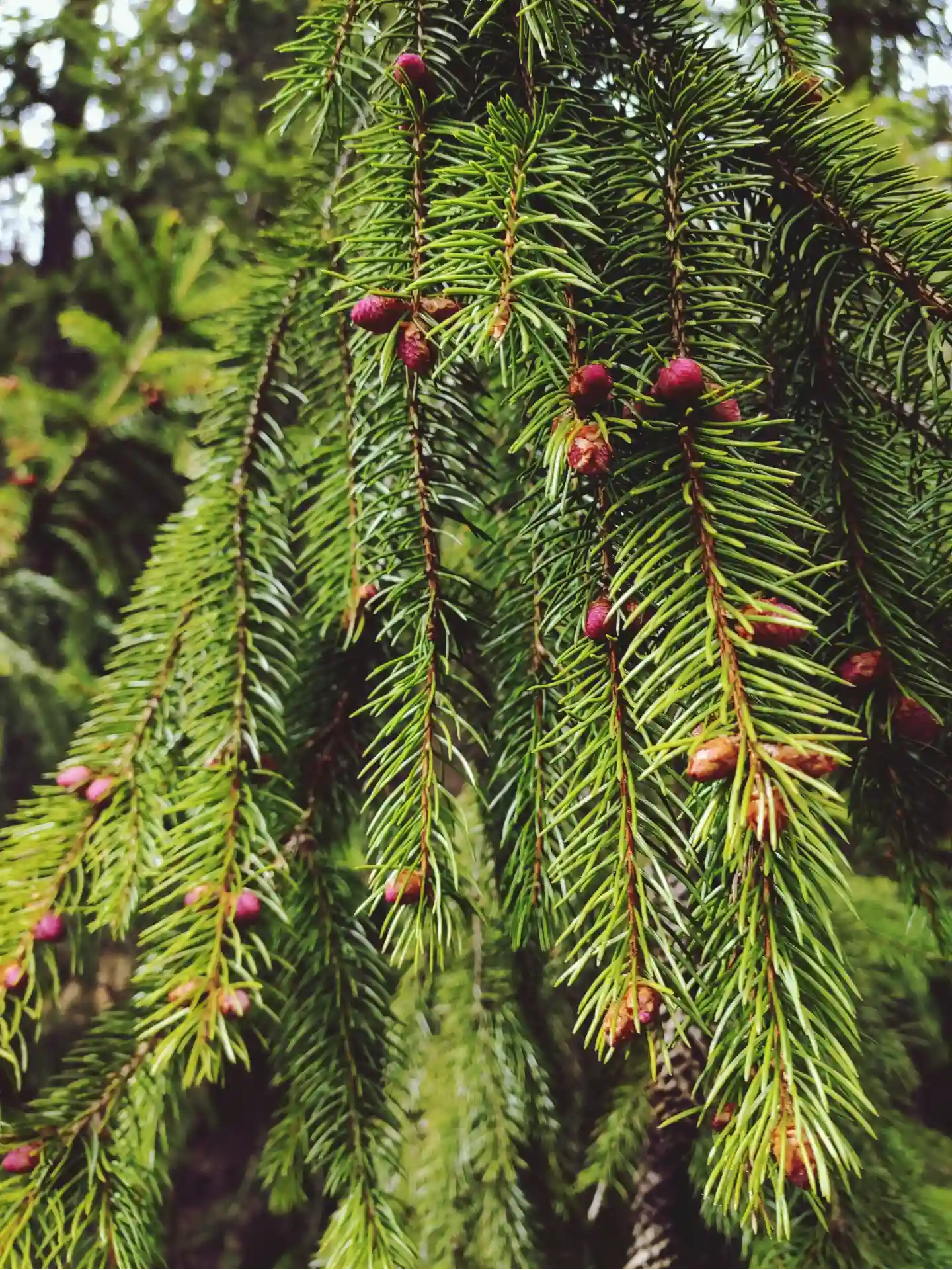
Best for: rugged eastern red cedar privacy where wildlife value and wind protection matter. As a native juniper, it feeds and shelters birds and handles exposed sites; it’s also salt-tolerant, making it useful along roads where arborvitae often struggle.
Spacing & layout: For windbreak/privacy rows, state forestry programs commonly advise 6–10 ft between trees; USDA’s plant fact sheet gives 3–6 ft for seedling establishment rows—fine at first, but thin or plan for wider mature spacing so crowns don’t overcrowd.
Watch-outs: Bagworms and cedar-apple rust (if you grow apples or crabapples nearby) are recurring issues flagged by NC State Extension; scout annually and remove bagworm cases before they hatch.
5. Emerald Green Arborvitae
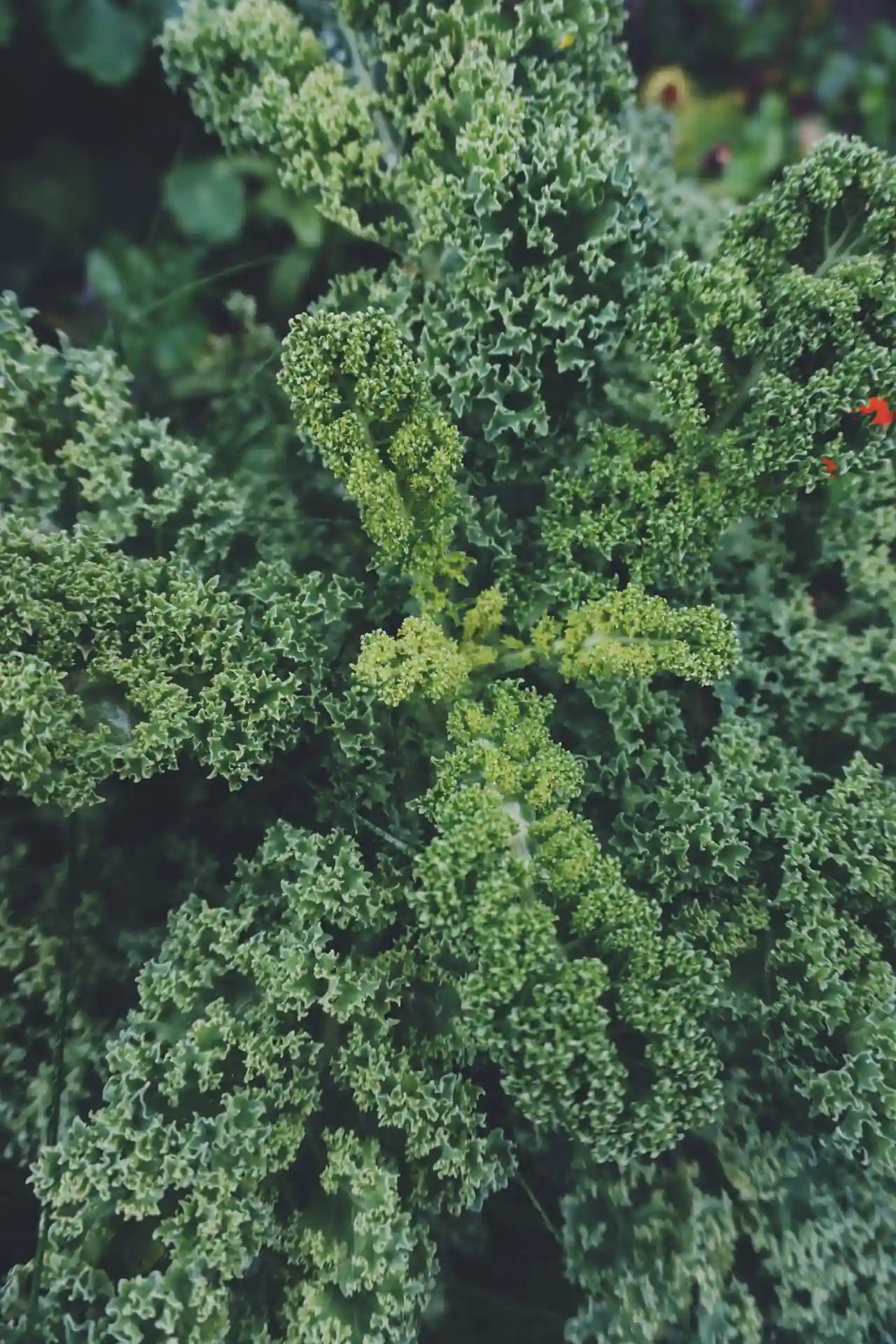
Best for: small garden privacy where width is tight. ‘Smaragd’ is a narrow, upright arborvitae most often 7–15 ft tall (occasionally to 20 ft) and 3–4 ft wide, so it tucks into side yards and along fences without eating space. Missouri Botanical Garden highlights its compact, formal habit.
Spacing & siting: For a solid screen, plant ~3–4 ft on-center; keep rows out of heavy road-salt spray, which many extensions flag as hard on arborvitae. Mulch to conserve moisture and irrigate during dry spells the first 2–3 seasons.
Deer reality check: Multiple extension sources note white-tailed deer favor Thuja occidentalis, while ‘Green Giant’ (a different Thuja hybrid) is somewhat less palatable. Use fencing, cylinders, or repellents where deer pressure is high.
6. Italian Cypress
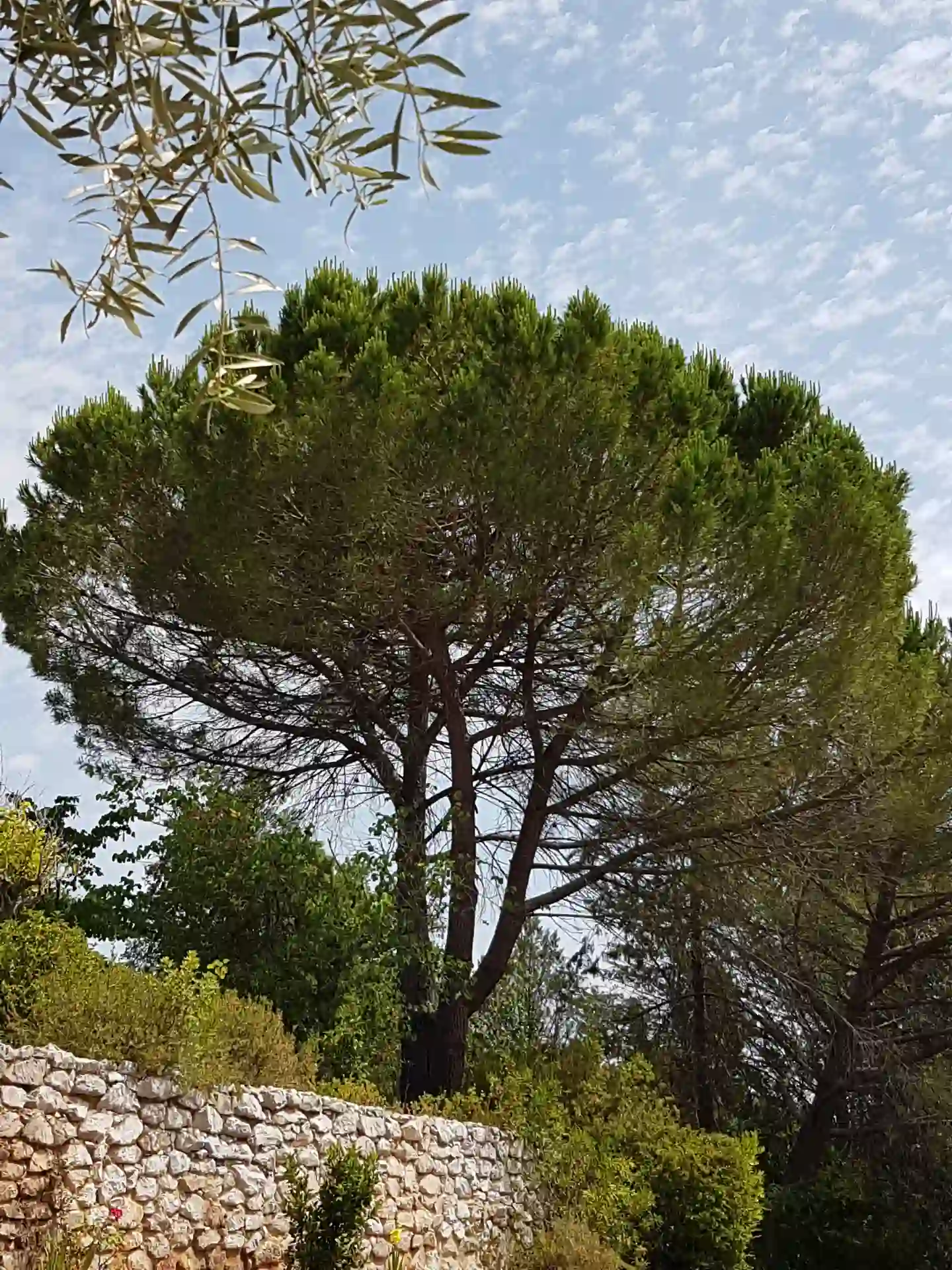
Best for: Italian cypress privacy in Mediterranean or sheltered urban microclimates where you want height without width. UF/IFAS describes a narrow column typically 25–40+ ft tall in the eastern U.S. (taller in the West) and often ~3 ft wide; RHS profiles the species’ naturally upright, columnar habit. For a dense formal screen, ~3 ft spacing is commonly advised in IFAS fact sheets.
Site like a pro: Full sun, excellent drainage, and irrigation during drought are non-negotiable; water-logging or shade leads to stress and thin growth.
Disease caution: Seiridium (cypress) canker is a known risk in warm/dry regions and where trees are stressed; UC IPM and University of Arizona Cooperative Extension both flag Italian cypress among the susceptible hosts—good drainage, proper spacing, and avoiding trunk wounds reduce risk.
7. Hollies for Screens
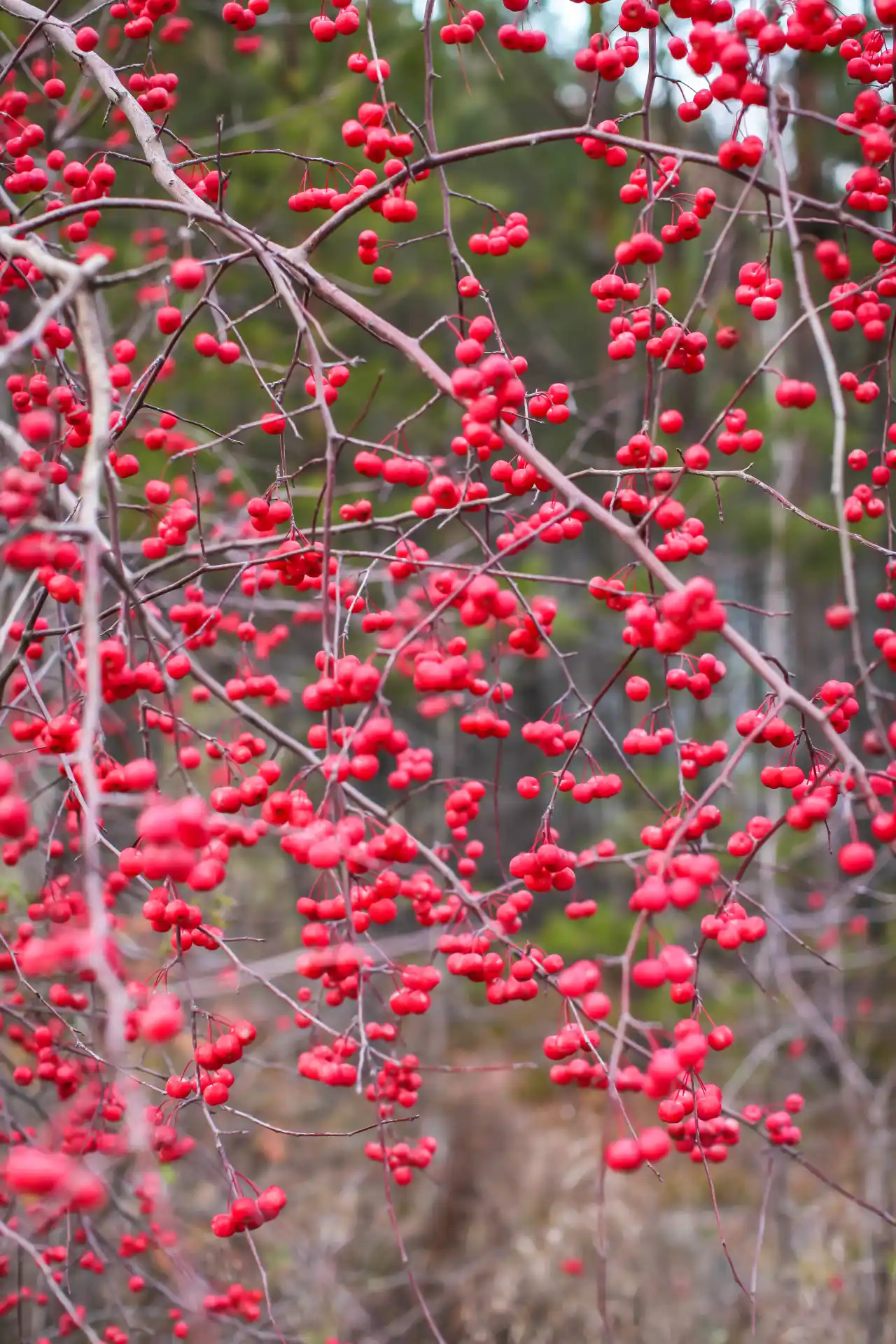
Best for: a holly privacy tree that keeps foliage and berries for an evergreen berry hedge with wildlife value.
‘Nellie R. Stevens’ (hybrid holly): University of Florida (IFAS) lists a mature size of ~20–30 ft tall and 10–15 ft wide, with good drought tolerance once established and a naturally dense, pyramidal habit—ideal for screening. Plant in sun to partial shade; for berries, ensure a compatible male holly nearby. For single specimens beside buildings, allow 10–15 ft from walls or boundaries so the crown can reach its published spread without constant corrective pruning (a practical rule echoed in Extension spacing guidance that uses half the mature spread).
English holly (I. aquifolium): The Royal Horticultural Society highlights common holly as a large evergreen (H6 hardy across the UK), tolerant of partial shade, with spring flowers for pollinators and winter berries on female plants—great for wildlife-friendly screening where yew or laurel won’t fruit. For hedges, plant smaller liners closer; for single trees, keep ~10–15 ft from walls so lower limbs can stay clothed to the ground.
Spacing tips: For hedges, set young hollies closer; for specimens, plan clearance based on mature spread (10–15 ft for ‘Nellie R. Stevens’)—and site away from high-salt spray and wind tunnels to avoid leaf scorch.
8. Portuguese Laurel
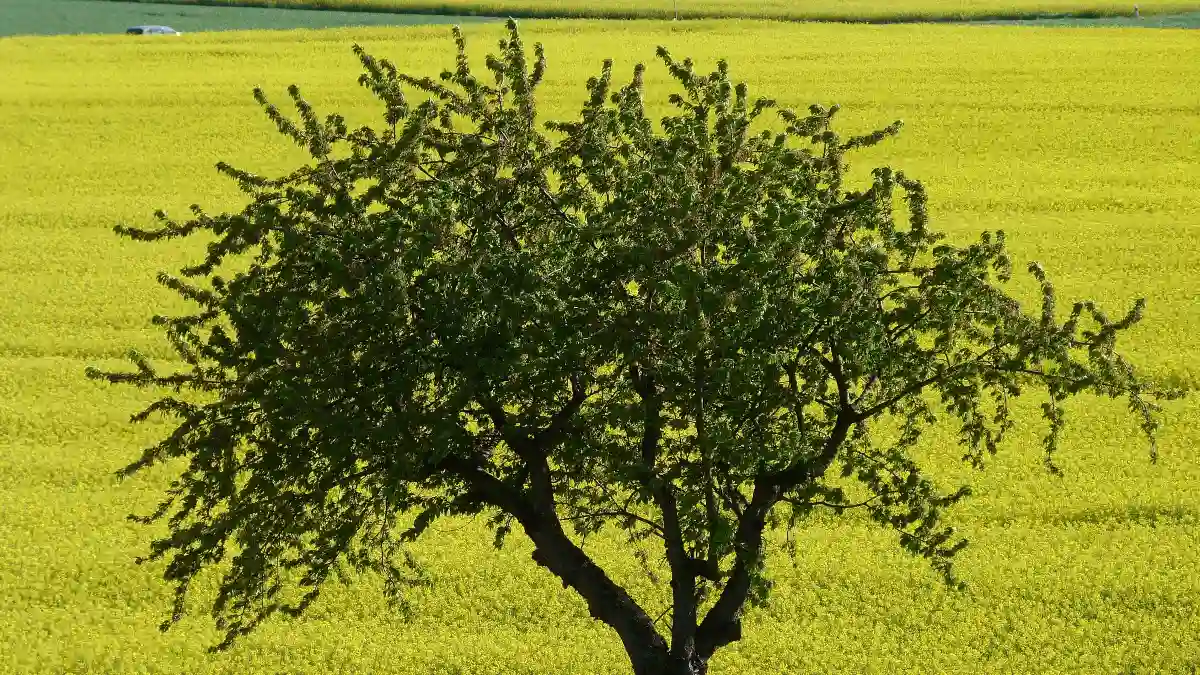
Why choose it: If you like “laurel look” but worry about cherry laurel running wild in some regions, Portuguese laurel is the tidier pick. The RHS profiles it as an evergreen small tree/large shrub with ultimate height >12 m and spread >8 m over decades, happy in sun or partial shade and tolerant of chalk and clay. BBC Gardeners’ World confirms it’s a robust hedging choice and gives a spacing of ~60 cm (about 2 ft) for standard hedges. UK nurseries likewise advise 45–60 cm for single-row hedges, which closes quickly while preserving airflow.
Where it beats cherry laurel: Multiple public agencies in the Pacific Northwest and UK flag cherry laurel (Prunus laurocerasus) as invasive or a weed of concern, escaping via bird-dispersed seed. If you’re in those climates, Portuguese laurel is the safer “evergreen privacy” choice with similar looks but less spread risk.
Planting notes: For a Portuguese laurel hedge, plant 45–60 cm apart; in exposed sites, provide temporary windbreaks until established. Trim once after midsummer flush to keep a crisp face and dense base.
9. Yew (Taxus baccata)
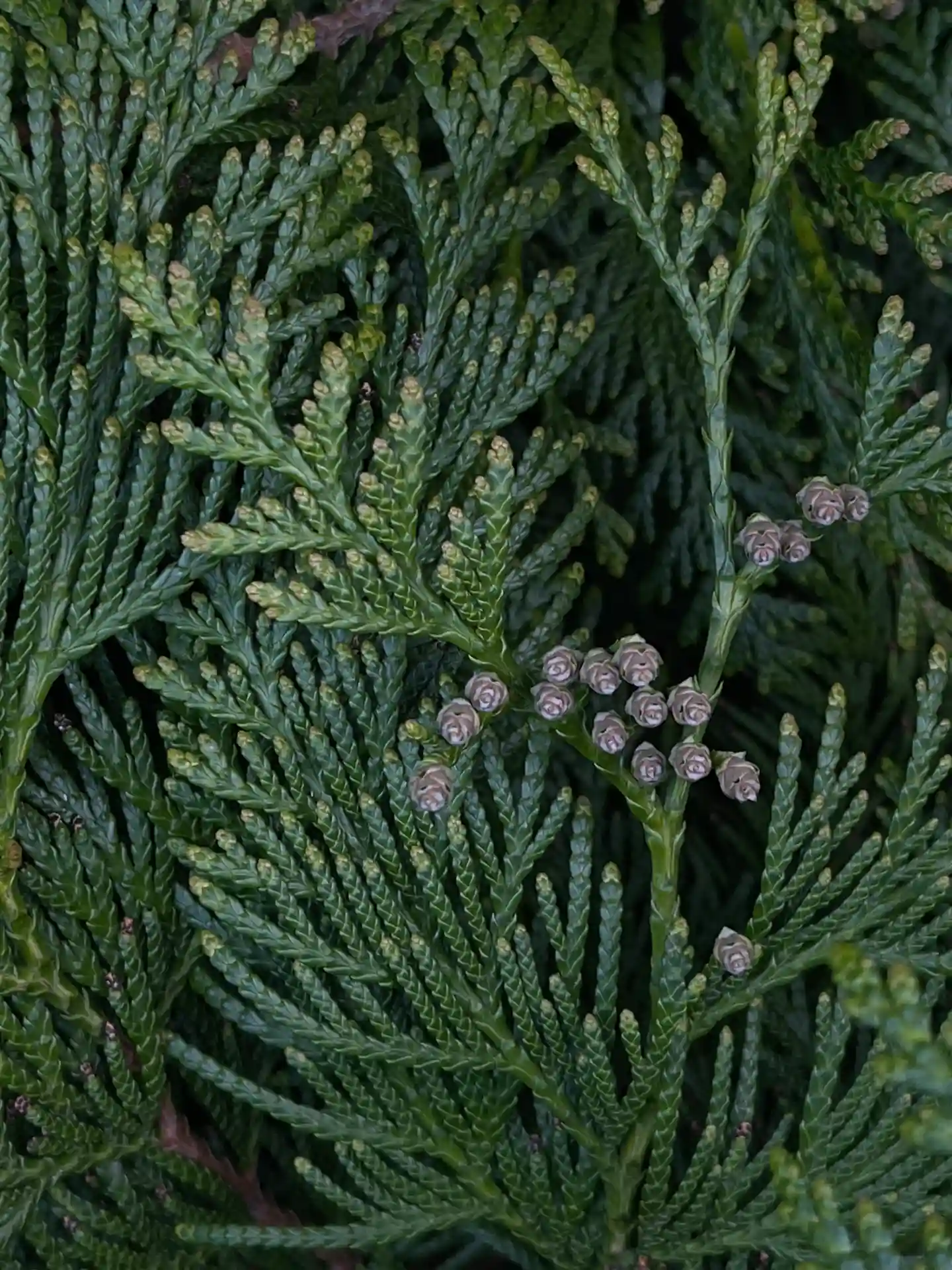
What you get: A classic yew hedge gives a shade evergreen screen that clips crisply and ages gracefully. UK growers and RHS describe average growth ~20–40 cm per year once established—easy to maintain at a formal height. It tolerates sun to shade (avoid waterlogging) and thrives in many soils. All parts are toxic (except the fleshy aril), so site thoughtfully where children or livestock won’t graze clippings.
Spacing that works: For an instant-looking hedge, ~60 cm (2 ft) between plants is the BBC Gardeners’ World rule of thumb; nurseries often advise 2–3 plants per metre depending on starting size—tighter for faster closure, wider if you’re patient. Keep the hedge slightly wider at the base so light reaches lower foliage.
Care tip: Feed lightly, water in dry spells the first two seasons, and clip in late summer. If renovating an old, gappy yew, it reponds to hard pruning better than most evergreens—stage reductions over 2–3 years.
10. Southern Magnolia
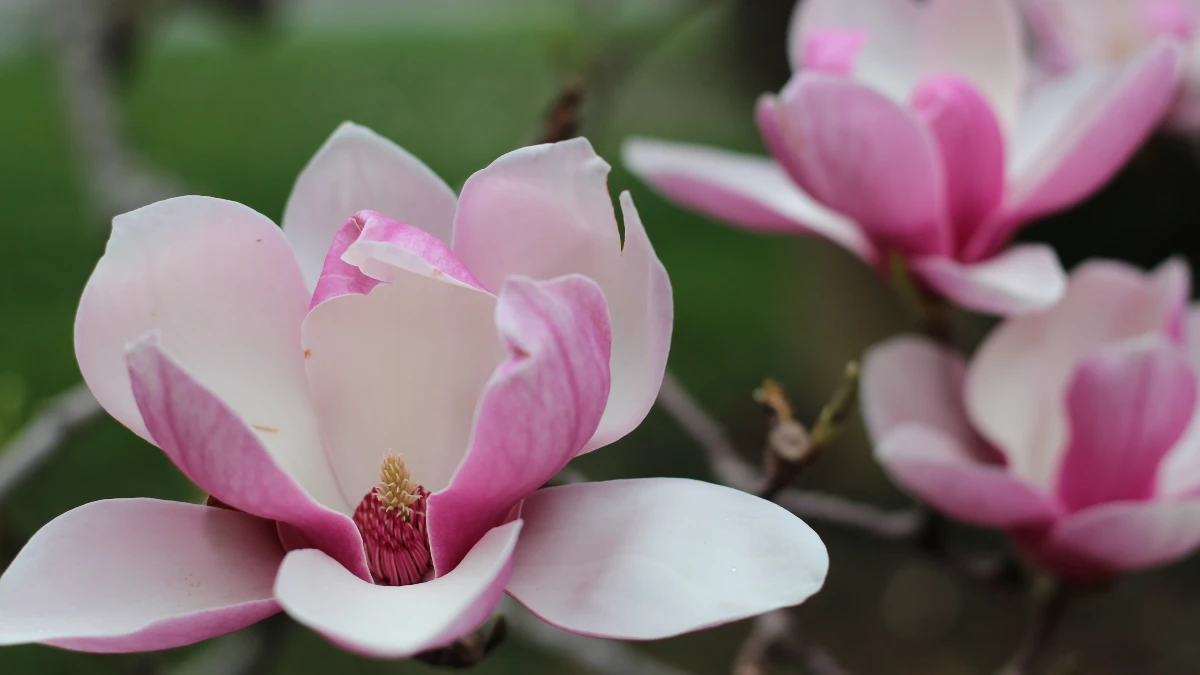
Why it’s great: An evergreen magnolia with glossy, dark leaves backed in velvety brown and fragrant summer flowers—a handsome flowering privacy tree that reads elegant rather than “hedgy.” IFAS and Missouri Botanical Garden list size typically ~30–50 ft tall and ~15–20 ft wide with a dense, pyramidal habit—substantially more compact than the species.
Cold range & leaf hold: Sources differ: Missouri Botanical Garden notes it’s reliably hardy in Zones 7–9, survives in Zone 6 if sheltered, and may drop some leaves in hard winters; other references and IFAS materials place many evergreen magnolias broadly in 6–9 depending on siting and selection. In colder spots, give a south-facing, wind-sheltered wall and mulch roots to help winter leaf retention.
Siting & soil: Both MBG and IFAS emphasize moist, well-drained, organically rich soil and part sun to full sun (often light afternoon shade is best). Avoid extremes—waterlogging or drought—especially in the first 2–3 summers. For privacy lines, space 15–20 ft on-center (its mature spread) to keep crowns full without crowding.
11. Holm Oak
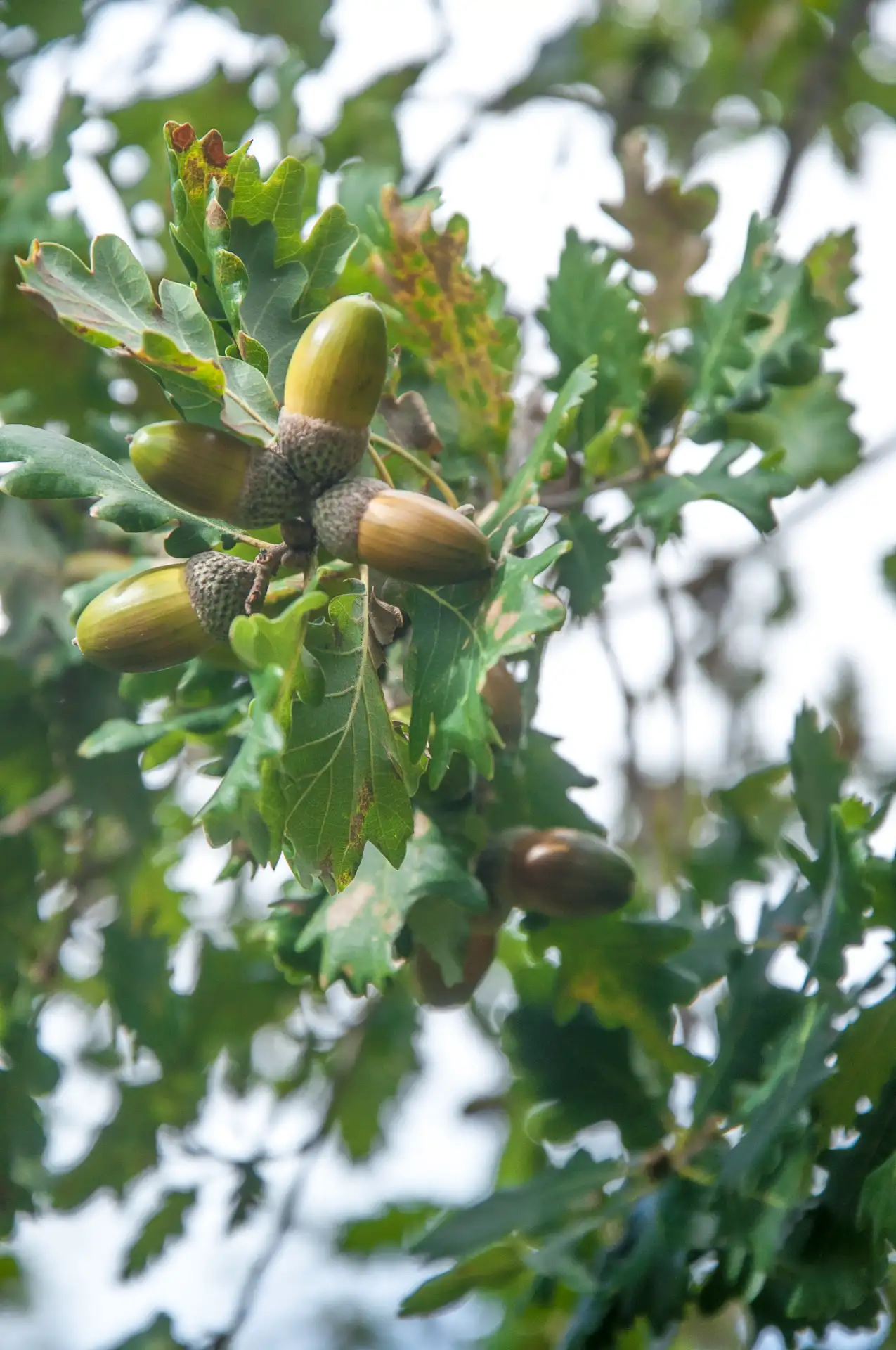
Best for: big-scale holm oak privacy where you need a tough, evergreen windbreak or statement tree that can also be clipped.
What to expect: The Royal Horticultural Society describes holm oak as a large evergreen that ultimately reaches around 25 m with a broad, rounded crown; Missouri Botanical Garden lists a typical range of 40–70 ft. In other words: it’s long-lived, substantial, and not a small-space hedge plant. Plan for size from day one.
Why it excels near the coast (and in towns): Gardeners’ World highlights its salt-spray and strong-wind tolerance, and notes it’s pollution-tolerant and happy clipped—so you can keep a formal face while benefiting from an ultra-hardy backbone. In severe winters in colder districts it may thin leaves, so it’s best in milder parts of the UK and similar climates.
Wildlife value: As an oak, it provides shelter and acorns for birds and mammals; the Woodland Trust also notes its usefulness as a coastal windbreak thanks to salt resistance.
Actionable spacing: Treat it like the large tree it is. For a screen of trees, allow 8–10 m between trunks (working off the RHS’s ~10 m ultimate spread) so crowns can develop without crowding walls or utilities; clip faces annually if you want a tidier “evergreen oak hedge.” In small gardens, choose another species.
12. Podocarpus
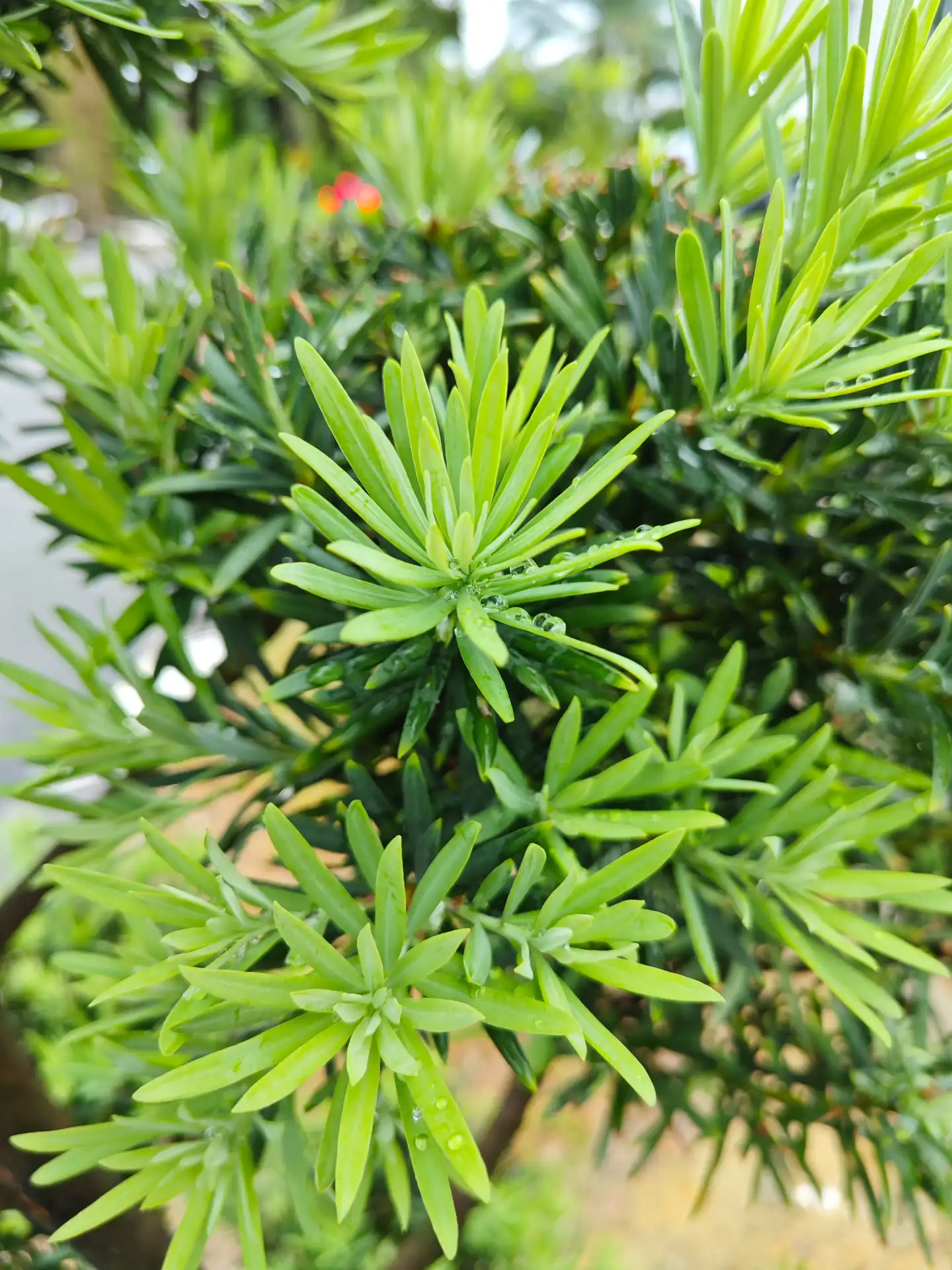
Best for: a podocarpus hedge or yew pine privacy screen that’s dense to the ground, formal if you want it, and heat-tolerant.
Growth & size: University of Florida (IFAS/EDIS) describes podocarpus as a popular dense hedge that, if unsheared, reaches ~35–50 ft and makes an attractive small tree; it naturally holds foliage low to the ground, which is ideal for screening. NC State adds that it dislikes wet soils—keep drainage sharp.
Spacing that works: For a formal hedge, UF/IFAS field guidance recommends ~2–4 ft on-center (tighter closes faster, but requires more trimming). For a looser screen, 4+ ft preserves airflow and reduces maintenance. Shape the hedge slightly wider at the base so lower leaves stay clothed.
Climate & culture: Commonly successful in Zones ~7–10A with full sun to part shade, regular watering in establishment, and no standing water. In colder pockets, site against a warm wall and mulch the root zone.
Bonus: Planting, Spacing & Legal Checklist (UK-relevant, useful globally)
Know the law (England). Under the government’s High Hedges guidance, a complaint can apply to evergreen or semi-evergreen rows over 2 m that form a barrier to light or access (two or more trees/shrubs in a line). Councils can issue remedial notices to reduce height. Check the official GOV.UK guide before you plant, and talk to neighbours early. The RHS also explains how councils judge final heights—they may not cut to exactly 2 m.
Spacing for health, not just speed. Use the mature spread from authoritative profiles (RHS, MBG, university extensions) to set on-center spacing. Tight rows fill faster but increase stress and disease pressure; aim for enough airflow that you can walk or prune between plants at maturity. Examples in this article (e.g., podocarpus 2–4 ft, Thuja ‘Green Giant’ 5–6 ft tight / 8–10 ft natural) show how to balance closure and plant health.
Avoiding disease in cypresses (Leyland/Italian). Extension pathologists in Arizona and the University of California flag Seiridium (cypress) canker as a leading problem on Leyland and Italian cypress, especially when trees are wounded, drought-stressed, or crowded. Reduce risk by watering deeply in drought, sanitising tools, maintaining good spacing, and avoiding trunk injuries.
Wildlife & deer reality check. Multiple university extensions (e.g., Penn State) note arborvitae are frequently browsed by white-tailed deer, while ‘Green Giant’ is somewhat less palatable. In high-pressure areas, use physical barriers or switch to tougher choices (e.g., junipers/eastern red cedar).
Conclusion
Year-round privacy hinges on evergreen choices that fit your space, climate, and maintenance appetite. If you need rapid coverage, Thuja ‘Green Giant’ and Cryptomeria ‘Yoshino’ build mass quickly; if you prefer longevity and structure, yew and holm oak provide refined, long-lived backbones; for scent and sheen, evergreen magnolia and hollies add flowers and berries.
Shortlist three to four candidates that match your site and zone, mark underground services and boundaries, and plant at the spacing listed above—then set a light-pruning reminder for years one and two to lock in density. Pick one of these trees that don’t lose leaves to create a living, evergreen privacy screen that looks good in every season.

